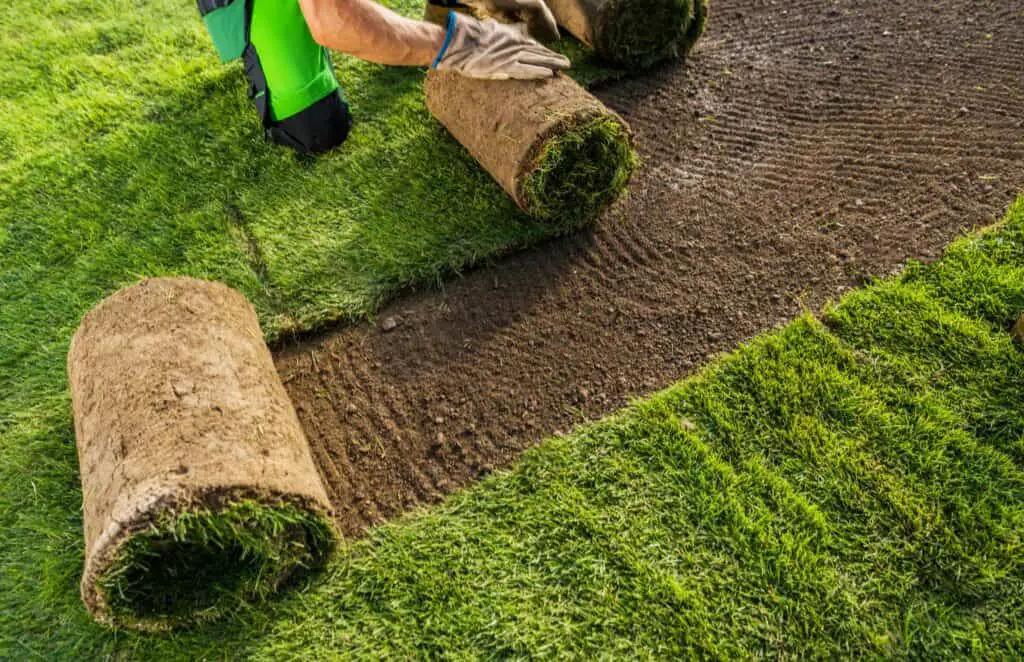When it comes to planting grass after tilling, timing is everything. Tilling is a crucial step in preparing the soil for planting, but it can also disrupt the soil structure and create an uneven surface that can affect the growth of your grass.
So, how long after tilling can you plant grass? The answer depends on several factors, including the type of grass you want to plant, the condition of the soil, and the climate in your area.
One of the most important things to consider when planting grass after tilling is the condition of the soil. Tilling can loosen the soil and create a more aerated environment, which can be beneficial for grass growth.
However, it can also disrupt the soil structure and create clumps or pockets of air that can impede water and nutrient absorption. To ensure optimal grass growth, you should wait at least a week after tilling to allow the soil to settle and re-compact.
Key Takeaways on How Long After Tilling Can I Plant Grass?
- Wait at least a week after tilling to plant grass to allow the soil to settle and re-compact.
- Choose the right grass seeds based on your climate, soil type, and intended use.
- Follow proper steps for planting grass after tilling, including soil preparation, seed selection, and watering.
Check out these other related posts:
- How Late Can You Plant Corn for Deer?
- How to Plant Grapes in FS22
- Can You Spray Neem Oil on Tomato Plants?
Understanding the Process of Tilling

Tilling and Soil Structure
Tilling is the process of breaking up the soil to improve its structure and fertility. It involves using a rototiller, a machine that has rotating blades that cut through the soil. Tilling is typically done before planting to prepare the soil for seeds or seedlings.
One of the benefits of tilling is that it can improve soil structure. Soil structure refers to the way soil particles are arranged and how they stick together.
Good soil structure is important for plant growth because it allows for good water drainage and root development. When soil is tilled, it helps to break up compacted soil and allows for air and water to penetrate deeper into the soil.
However, tilling can also have negative effects on soil structure if it is done too frequently or at the wrong time. Over-tilling can break down soil aggregates, which are clusters of soil particles held together by organic matter. This can lead to soil compaction, reduced water infiltration, and decreased plant growth.
Role of Rototiller
The rototiller is the most commonly used tool for tilling. It is a machine that has rotating blades that cut through the soil. The blades can be adjusted to different depths depending on the soil type and the purpose of the tilling.
The rototiller is a powerful tool that can quickly break up soil and prepare it for planting. However, it can also be dangerous if not used properly. It is important to read the manual and follow all safety precautions when using a rototiller.
In addition to breaking up soil, the rototiller can also mix in organic matter such as compost or manure. This can help to improve soil fertility and structure. However, it is important to not overdo it with organic matter, as too much can lead to nutrient imbalances and other problems.
Importance of Soil Preparation
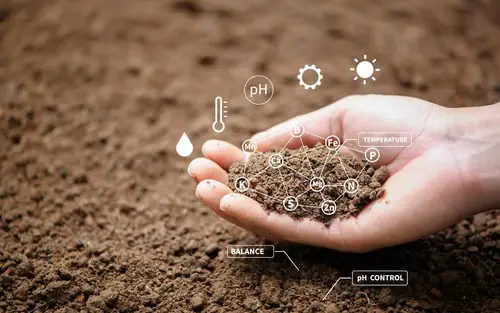
Preparing the soil for planting grass is crucial to ensure that the seeds have the best chance of germinating and growing into healthy plants. Proper soil preparation involves a few key steps that help create an environment that is conducive to plant growth.
Soil Quality and Nutrients
Before planting grass, it is important to assess the quality of the soil. Soil quality refers to the physical, chemical, and biological properties of the soil. The soil should be tested for pH, nutrient levels, and organic matter content. The soil test results will help determine if any amendments are needed to improve the soil quality.
Adding compost, topsoil, or other organic material can improve soil quality by increasing the nutrient content and improving soil structure. If the soil is too sandy, adding clay can help retain moisture and nutrients. If the soil is too heavy, adding sand can help improve drainage.
Soil Aeration and Drainage
Soil aeration refers to the process of creating air pockets in the soil. Aeration is important because it helps improve soil structure and allows roots to grow more easily. Tilling the soil is one way to aerate the soil, but it should be done carefully to avoid damaging the soil structure.
Drainage is also an important factor to consider when preparing the soil for planting grass. Poor drainage can lead to waterlogged soil, which can suffocate plant roots and lead to disease. Adding sand or other materials can help improve drainage, but it is important to avoid adding too much, as this can lead to soil compaction.
Soil Moisture
Proper soil moisture is essential for seed germination and plant growth. The soil should be moist but not waterlogged. Before planting grass, it is important to water the soil thoroughly and allow it to drain. This will help ensure that the soil is evenly moist and that the seeds have access to the moisture they need to germinate.
Choosing the Right Time to Plant Grass

When it comes to planting grass after tilling, timing is everything. The right timing will ensure that your grass seeds have the best chance of germinating and growing into a lush, green lawn.
In general, you should wait for at least two weeks after tilling before planting grass. However, the exact timing will depend on the season and climate of your region.
Spring Planting
Spring is the best time to plant grass in most regions, especially in the North. The soil is starting to warm up, and the weather is mild, which creates the perfect conditions for grass seed germination.
If you live in the South, you can also plant grass in the spring, but you should do it earlier in the season before the weather gets too hot.
Summer Planting
Summer is not the best time to plant grass, but it can be done if you take the necessary precautions. The heat and dry weather can make it difficult for grass seeds to germinate, so you will need to water your lawn regularly. You should also choose a heat-tolerant grass variety that can withstand the high temperatures.
Fall Planting
Fall is another excellent time to plant grass, especially in the South. The cooler temperatures and increased rainfall create ideal conditions for grass seed germination. If you live in the North, you can also plant grass in the fall, but you should do it earlier in the season before the first frost.
Winter Sowing
Winter sowing is not recommended in most regions because the soil is too cold for grass seed germination. However, if you live in a mild climate, such as the Pacific Northwest, you can plant grass in the winter. You should choose a cool-season grass variety that can withstand the cold temperatures.
Selecting the Right Grass Seeds
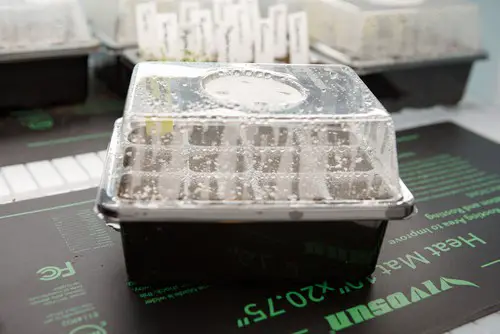
When it comes to planting grass after tilling, selecting the right grass seeds is crucial for a successful lawn. There are two main types of grass seeds: warm-season and cool-season grasses. Each type has its own unique characteristics and is suitable for different climates and regions.
Warm-Season Grasses
Warm-season grasses are best suited for regions with hot summers and mild winters. They grow actively during the summer months and become dormant during the winter. Some of the most popular warm-season grasses include Bermudagrass, Zoysia grass, and Bahia grass.
Bermudagrass is a popular choice for warm-season grasses due to its drought tolerance and ability to thrive in full sun. It is commonly used in the southern states and is known for its fine texture and dense growth pattern.
Zoysia grass is another warm-season grass that is well adapted to hot and humid conditions. It is a slow-growing grass that requires less maintenance than other warm-season grasses. It has a dense growth pattern and is tolerant of shade.
Bahia grass is a warm-season grass that is best suited for regions with sandy soils. It is known for its deep root system and drought tolerance. It has a coarse texture and is commonly used in pastures and for erosion control.
Cool-Season Grasses
Cool-season grasses are best suited for regions with cold winters and mild summers. They grow actively during the spring and fall months and become dormant during the summer. Some of the most popular cool-season grasses include Kentucky bluegrass, tall fescue, and perennial ryegrass.
Kentucky bluegrass is a popular choice for cool-season grasses due to its fine texture and ability to form a dense lawn. It is commonly used in the northern states and is known for its cold tolerance and ability to grow in shade.
Tall fescue is another cool-season grass that is well adapted to a wide range of soil types and growing conditions. It has a deep root system and is known for its drought tolerance. It has a coarse texture and is commonly used in high-traffic areas.
Perennial ryegrass is a cool-season grass that is best suited for regions with mild winters. It is known for its fast germination and ability to establish quickly. It has a fine texture and is commonly used in overseeding lawns.
When selecting grass seeds, it is important to consider the climate, soil type, and growing conditions of your region. By selecting the right grass seeds, you can ensure a healthy and beautiful lawn.
Steps to Plant Grass After Tilling
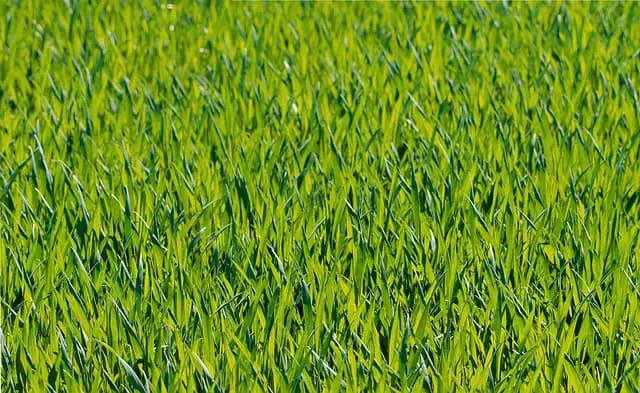
After tilling the soil, it’s essential to wait for a few weeks before planting grass. This waiting period allows the soil to settle and regain its nutrients. Once the waiting period is over, follow these steps to plant grass after tilling:
1. Seed Spreading
Spread the grass seed using a broadcast spreader. This tool helps to distribute the seeds evenly across the soil. Ensure that you apply the seeds at the recommended rate, which is usually one to two pounds per 1,000 square feet. Use a rake to lightly cover the seeds with soil.
2. Watering and Fertilizing
Water the soil immediately after spreading the seeds. Ensure that you keep the soil moist but not waterlogged. Use a quick-release fertilizer to provide the necessary nutrients for the grass to grow. Apply the fertilizer according to the manufacturer’s instructions.
3. Mowing and Maintenance
Once the grass has grown to a height of three to four inches, it’s time to mow it for the first time. Ensure that you set the mower blade to the highest setting to avoid damaging the young grass. After the first mowing, continue to mow the grass regularly to maintain a healthy lawn.
Regular watering is essential to ensure that the grass remains healthy. Water the grass deeply once or twice a week, depending on the weather conditions. Avoid overwatering, as this can lead to fungal growth and other problems.
Addressing Potential Issues
Weed and Insect Control
Tilling can disturb the soil and bring weed seeds to the surface. This can result in an increase in weed growth, which can compete with grass for nutrients and water. Insects can also be a problem, as tilling can disrupt their habitats and expose them to predators.
To prevent weed and insect problems, it is recommended to wait at least two weeks after tilling before planting grass. During this period, weeds and insect populations can be controlled with selective or non-selective weed killers and insecticides.
Erosion and Soil Compaction
Tilling can also cause soil erosion and compaction. Soil erosion can occur when the topsoil is disturbed and exposed to wind and water. This can result in the loss of soil nutrients and organic matter, which are essential for healthy grass growth.
Soil compaction can occur when the soil is compressed and becomes dense, making it difficult for roots to penetrate and absorb water and nutrients. To prevent soil erosion and compaction, it is recommended to wait at least two weeks after tilling before planting grass.
During this period, the soil can settle and be re-compacted, ensuring optimal water drainage and root health.
To further prevent erosion and compaction, it is recommended to use erosion control products such as straw, mulch, or erosion control blankets. These products can help to stabilize the soil and prevent erosion. Additionally, using a core aerator can help to reduce soil compaction and improve soil health.
Benefits of Tilling Before Planting Grass
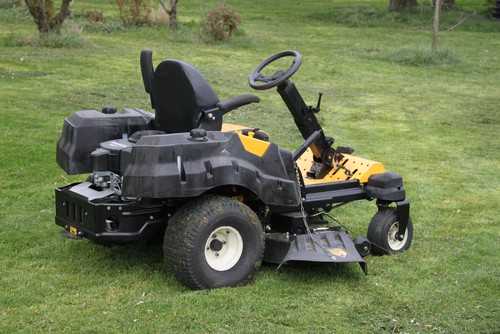
Tilling is an essential step in preparing the soil for planting grass. It involves breaking up the soil to create a loose and aerated environment for the grass seeds to grow. Here are some benefits of tilling before planting grass:
1. Improved Soil Structure
Tilling helps to break up compacted soil, which improves soil structure. Compacted soil can prevent water and nutrients from penetrating the soil surface, which can lead to a weak and unhealthy lawn. Tilling loosens the soil, allowing water and nutrients to penetrate the soil surface, which promotes a healthy lawn.
2. Increased Porosity for Roots
Tilling creates air pockets in the soil, which increases porosity for the roots. This allows the roots to grow deeper and establish a stronger root system. A healthy root system is essential for a healthy lawn.
3. Reduced Pest Activity
Tilling can reduce pest activity in the soil. Pests such as grubs and cutworms can damage the grass roots and prevent the grass from growing. Tilling can expose these pests to predators and also disrupt their habitat, reducing their activity in the soil.
4. Improved Availability of Nutrients
Tilling can improve the availability of nutrients in the soil. When the soil is compacted, nutrients can become trapped and unavailable to the grass roots. Tilling loosens the soil, allowing the nutrients to become more available to the grass roots.
5. Microorganisms
Tilling can also help to promote the growth of beneficial microorganisms in the soil. These microorganisms help to break down organic matter and release nutrients into the soil, which can promote a healthy lawn.
Frequently Asked Questions
How long should I wait to plant grass after tilling?
According to gardening experts, it is recommended to wait at least two to three weeks after tilling before planting grass. This waiting period allows the soil to settle and the beneficial microorganisms to recover and resume improving the soil.
It is also during this time that most of the exposed weeds will have died, and more soil nutrients would be available for the grass to absorb.
What are the steps to planting grass after tilling?
After tilling, the first step in planting grass is to remove any debris or rocks from the soil. Then, the soil should be leveled and compacted to ensure an even surface for planting.
Next, the grass seed should be spread evenly over the soil, and then covered with a thin layer of soil or compost. Water the area thoroughly, and continue to water regularly until the grass is established.
Do I need to remove grass before tilling for planting grass?
It is recommended to remove any existing grass or weeds before tilling to ensure that the soil is loose and easy to work with. This will also help to prevent the grass or weeds from regrowing after tilling.
However, if the grass is not too thick, it can be tilled directly into the soil to act as a natural fertilizer.
How do I properly level my yard after tilling for planting grass?
To level your yard after tilling, use a rake or garden hoe to remove any high spots and fill in any low spots. Then, use a lawn roller or a board to compact the soil and create an even surface for planting.
It is important to ensure that the soil is not too compacted, as this can prevent the grass from rooting properly.
What is the best way to compact soil after tilling for planting grass?
The best way to compact soil after tilling is to use a lawn roller or a board. This will help to create an even surface for planting, and will also help to ensure that the grass roots properly.
However, it is important not to over-compact the soil, as this can prevent water and nutrients from reaching the grass roots.
What should I do after tilling my garden to prepare for planting grass?
After tilling your garden, it is important to remove any debris or rocks from the soil. Then, the soil should be leveled and compacted to ensure an even surface for planting.
Next, the grass seed should be spread evenly over the soil, and then covered with a thin layer of soil or compost. Water the area thoroughly, and continue to water regularly until the grass is established.

Hey, I’m Lisa and I’ve been an avid gardener for over 30 years. I love writing, talking and living in the garden! Feel free to connect with me on my socials below

